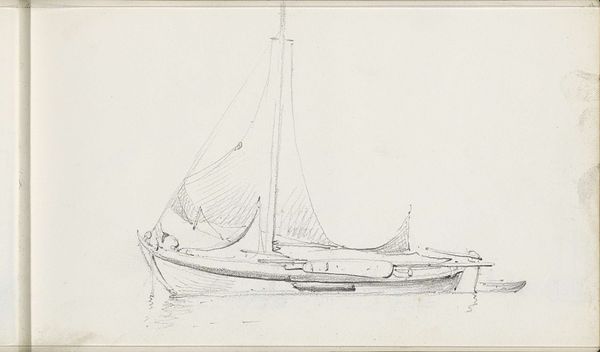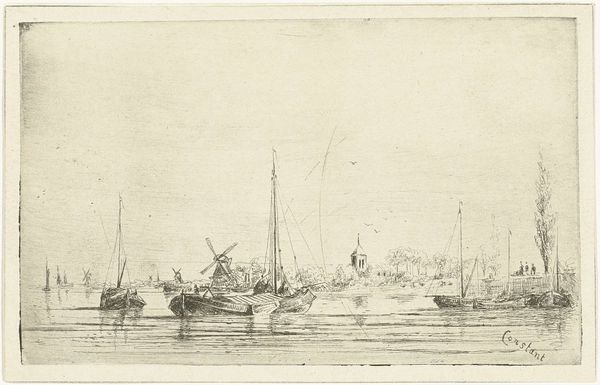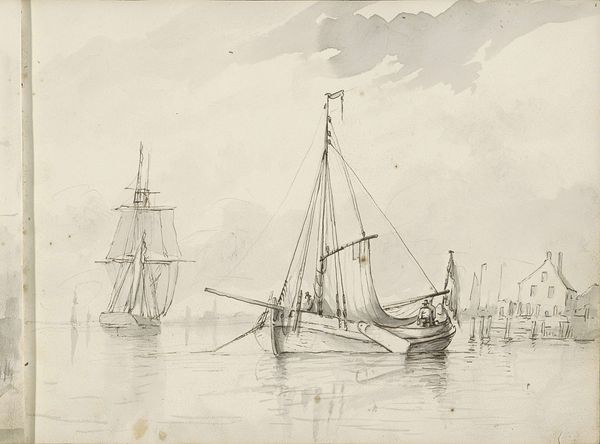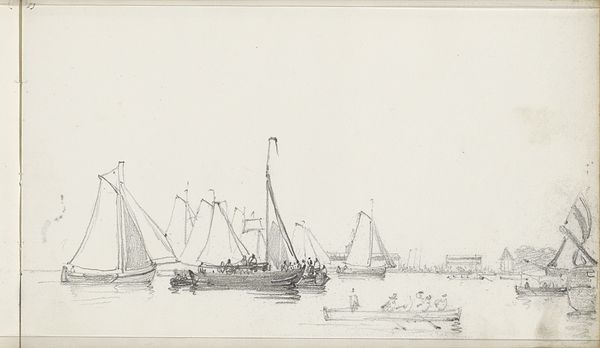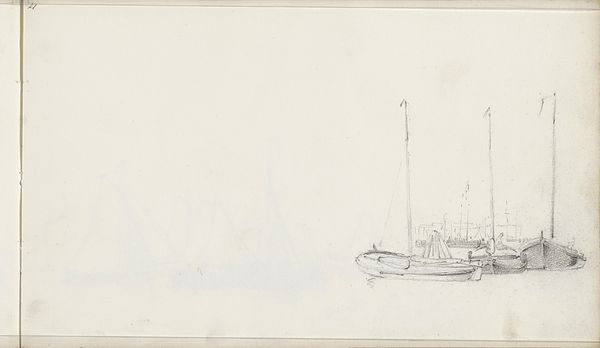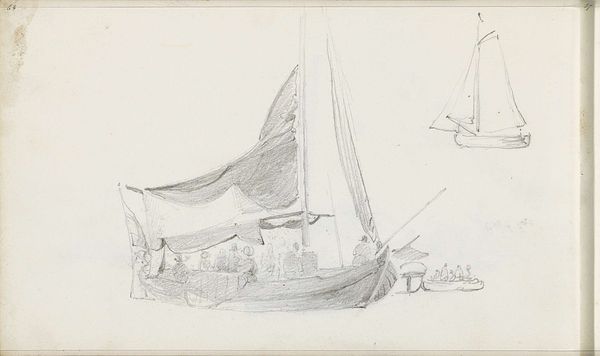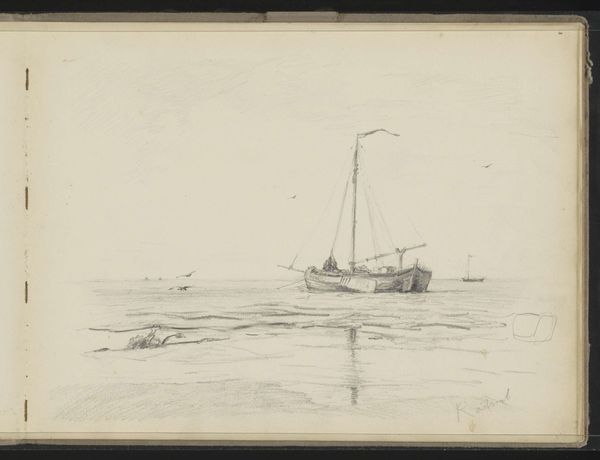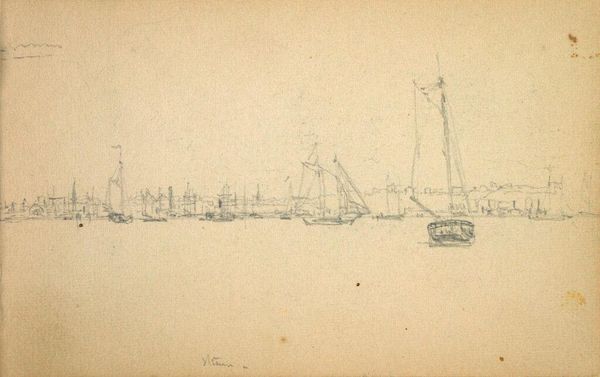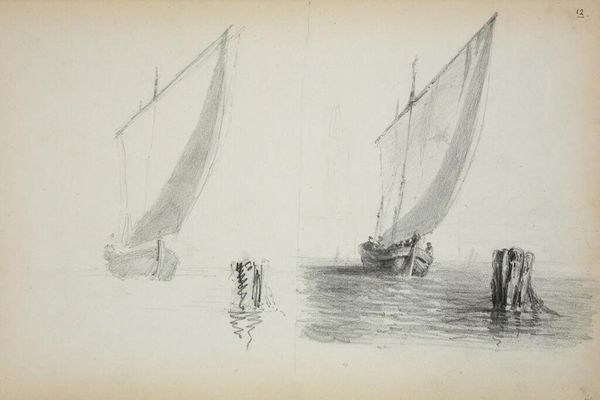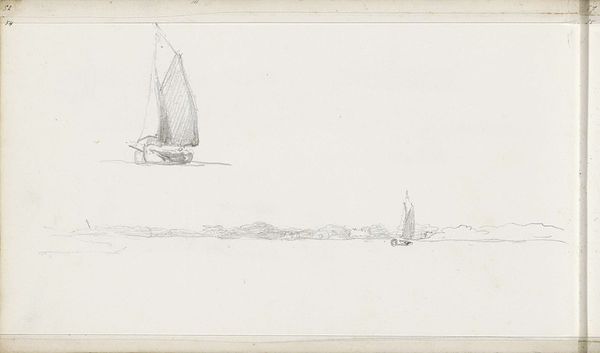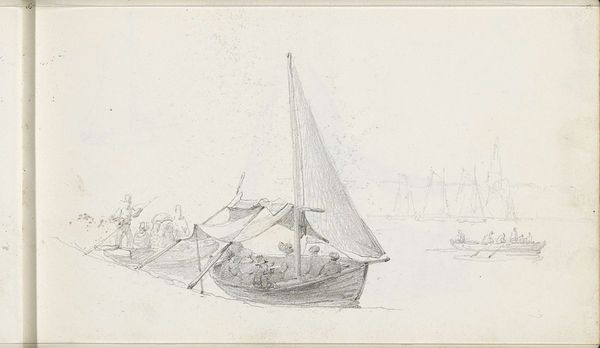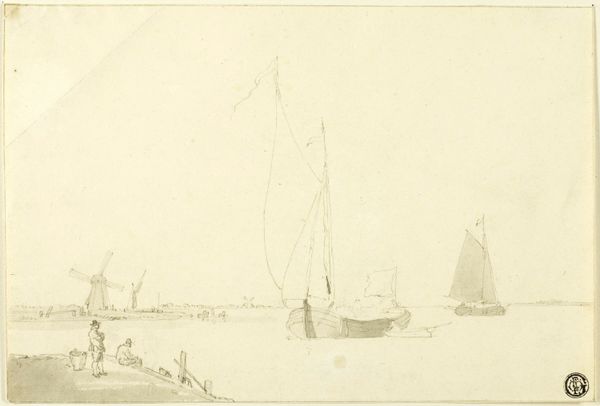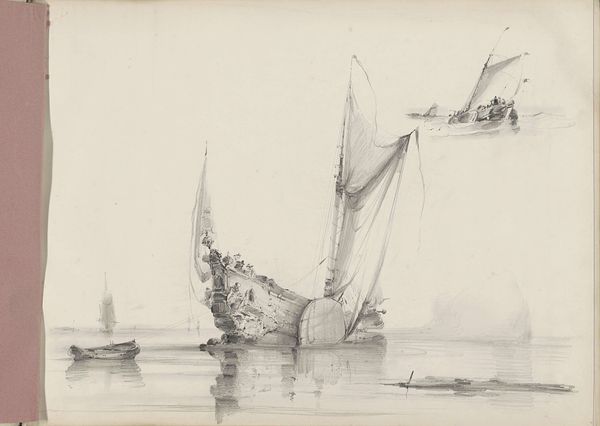
drawing, ink
#
drawing
#
pen sketch
#
incomplete sketchy
#
hand drawn type
#
landscape
#
personal sketchbook
#
ink
#
ink drawing experimentation
#
pen-ink sketch
#
line
#
pen work
#
sketchbook drawing
#
sketchbook art
#
realism
#
initial sketch
Copyright: Rijks Museum: Open Domain
Curator: Welcome. Before us is "Afgemeerde zeilschepen," or "Moored Sailing Ships," a pen and ink drawing by Petrus Johannes Schotel, created sometime between 1841 and 1865. It's currently held here at the Rijksmuseum. Editor: My initial impression is of quiet industry. The cluster of ships huddled together evokes a sense of concentrated activity, almost as though they are workers pausing before resuming labor. There’s something intimate about its small scale, too, like a secret glimpse into a private moment. Curator: Precisely. Schotel, known for his marine paintings, was deeply embedded in the Dutch maritime tradition. These sketches, often studies for larger works, give insight into 19th-century Dutch identity formation. The boats, essential for trade and defense, were potent symbols of national pride, especially during a period of shifting economic power. Consider, also, the gendered implications; seafaring has historically been a male-dominated domain. Editor: Absolutely. And if you look at the way the drawing is constructed, there is so much telling information. Notice the lines: how quickly sketched they are, suggesting not a finished product but a working document. The emphasis is on the structures of the ships – the rigging, the hulls – revealing an almost architectural understanding of their making. It invites us to consider the labor involved in constructing and maintaining these vessels, and the essential material realities behind maritime power. The sketch emphasizes the tangible elements rather than romanticizing the open sea. Curator: That attention to detail reminds us that shipbuilding itself was deeply ingrained within specific Dutch communities, part of a network of familial trades and skills passed down through generations. Incomplete though it may seem, Schotel captures the social web woven around maritime activities and, indeed, its inherent patriarchy. Editor: And that incomplete nature allows us to speculate about what the artist was focusing on. Did Schotel emphasize structural precision over capturing a complete scene? By focusing on elements, we gain insights into the processes involved, allowing for interpretations that move beyond just pictorial representation to explore material production and craft. Curator: This little sketchbook piece pulls into view, quite clearly, social hierarchies reflected in nautical professions. Editor: The material means were absolutely integral, just as crucial as who wielded them. Curator: A poignant reminder that art serves as an enduring testament to our shared human history, revealing our complex social structures and modes of being. Editor: Precisely, seeing through the artist’s hand, and our own understanding, allows us to see that relationship.
Comments
No comments
Be the first to comment and join the conversation on the ultimate creative platform.
